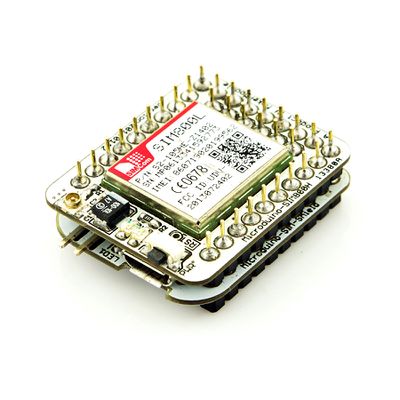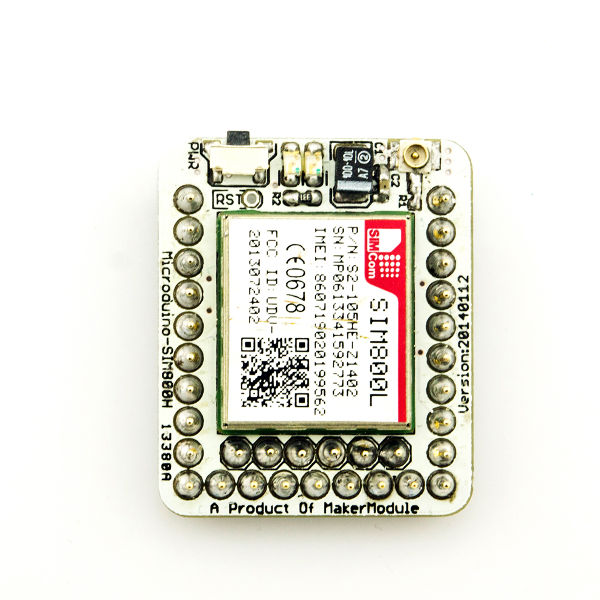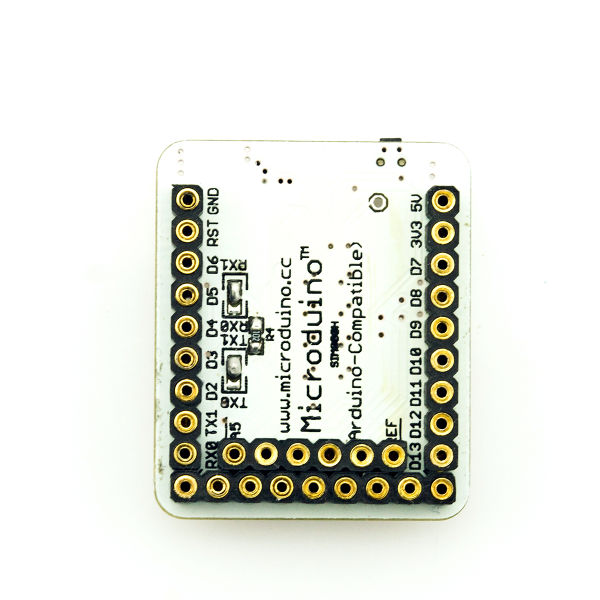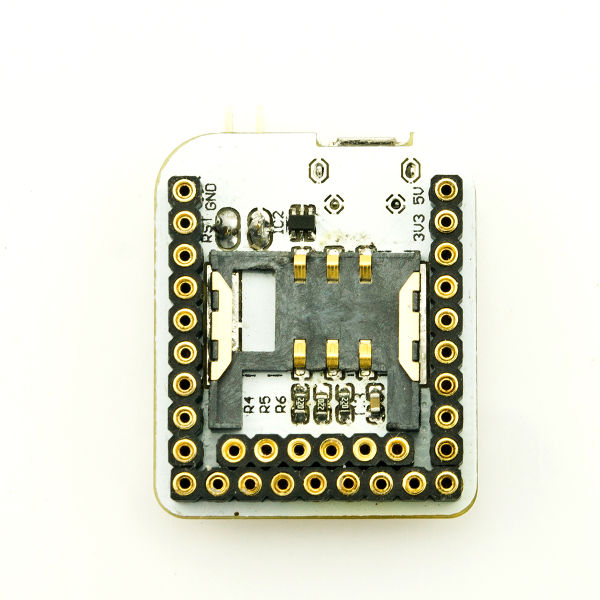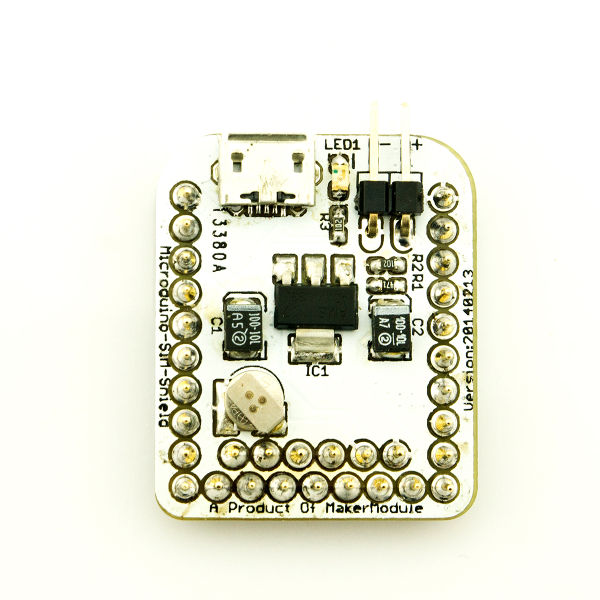“Microduino-GPRS/GSM”的版本间的差异
| 第5行: | 第5行: | ||
[[File:Microduino-GPRS-rect.jpg|400px|thumb|right|Microduino-USBHOST]] | [[File:Microduino-GPRS-rect.jpg|400px|thumb|right|Microduino-USBHOST]] | ||
| − | Microduino GPRS/GSM module | + | Microduino-GPRS/GSM module can get Microduino core board connected to the internet and achieve the function of sending and receiving messages when it is just inserted with a SIM card and follows some simple instructions. |
==Features== | ==Features== | ||
| − | *ESD | + | *ESD protection; |
| − | * | + | *Capable of being charged by USB, li-ion or other power supply options; |
| − | * | + | *Support automatic baud rate detection function; |
| − | * | + | *Capable of sending AT instructions and data through the serial port; |
| − | *Small, cheap, stackable | + | *Small, cheap, stackable and open; |
| − | *Open | + | *Open hardware circuit design and Arduino compatible programming development environment; |
| − | * | + | *Uniformed Microduino interface standard and rich peripheral modules, capable of having a fast and flexible connection and extension with other modules and sensors in accord with Microduino interface standard; |
| − | *2. | + | *Easy to be integrated to pegboards with a 2.45-pitch female header connector interface. |
==Specifications== | ==Specifications== | ||
| − | + | Adopt SIM800L module to support four-band GSM/GPRS, whose working band is:GSM850, EGSM900, DCS1800 and PCS1900MHz. | |
*Electrical characteristics | *Electrical characteristics | ||
**Working voltage:3.4V ~4.4V; | **Working voltage:3.4V ~4.4V; | ||
| − | ** | + | **The current consumption is 0.7 mA under the Sleep Mode |
*GPRS data | *GPRS data | ||
| − | **GPRS | + | **The maximum data transmission rate of GPRS is 85.6 kbps;; |
**Build-in TCP/IP protocol; | **Build-in TCP/IP protocol; | ||
**Encoding format:CS-1, CS-2, CS-3 and CS-4; | **Encoding format:CS-1, CS-2, CS-3 and CS-4; | ||
| − | **Support Unstructured Supplementary Service Data (USSD) | + | **Support Unstructured Supplementary Service Data(USSD) |
| − | *Serial | + | *Serial debugging |
| − | ** | + | **Support standard full-function serial as well as the transmission rate with a range from 1200bps to 115200bps; |
| − | ** | + | **Support serial port multiplexing function corresponding to GSM 07.10 protocol; |
*Two Main Compoments: | *Two Main Compoments: | ||
| 第46行: | 第46行: | ||
*Eagle PCB: '''[[File:Microduino-GSM.zip]]''' | *Eagle PCB: '''[[File:Microduino-GSM.zip]]''' | ||
* Microduino-GSM mudule SIM800L:'''[[File:SIM800L.pdf]]''' | * Microduino-GSM mudule SIM800L:'''[[File:SIM800L.pdf]]''' | ||
| − | *SIM card | + | *SIM car power supply and the card base:'''[[File:SIM800L.pdf]]''' |
==Development== | ==Development== | ||
| 第54行: | 第54行: | ||
==Application== | ==Application== | ||
| − | + | Sending short messages through the example program in the library. | |
| − | === | + | ===Preparation=== |
| − | * | + | *Hardware:Microduino FT232R, Microduino Core, Microduino GSM, USB cable or lithium battery; |
| − | * | + | *Software: GSM library, Arduino IDE (1.0.3 release and upper); |
*Uncompress the zip folder to libraries of Arduino IDE; | *Uncompress the zip folder to libraries of Arduino IDE; | ||
| − | *Connect the Microduino FT232R and PC using USB cable to download program and serial | + | *Connect the Microduino FT232R and PC using USB cable to download program and monitor the serial port; |
| − | *USB | + | *USB cable or li-ion battery to charge Microduino GSM module and press the power button for a long time to start Microduino GSM for about 4 seconds. That the power-on indicator goes on shows a successful start-up. |
| − | === | + | ===Debugging=== |
| − | *Open the | + | *Open SendSMS test program in the examples; |
| − | *After compiled, select the board "Microduino Core (Atmega328P@16M,5V)" | + | *After it gets compiled successfully, just select the board "Microduino Core (Atmega328P@16M,5V)" and download directly; |
| − | ** | + | **Open the serial monitor(The serial monitor is set to the format of "Newline" and "Enter" ), set the baud rate, and the "SMS Messages Sender" will be printed; |
| − | ** | + | **You need to wait for Microduino GSM module reading SIM card about 10 seconds. If that goes well, "GSM initialized" will be displayed and a note will pop up to remind you to input one number. |
| − | ** | + | **After the input, just press the Enter, it will remind you to write your message. |
| + | **Just send the message and after that,"COMPLETE" will be displayed on the screen if the message gets sent out. | ||
| − | == | + | ==Purchase== |
==History== | ==History== | ||
2014年8月1日 (五) 08:26的版本
| Language | English |
|---|
|
Microduino-GPRS/GSM module can get Microduino core board connected to the internet and achieve the function of sending and receiving messages when it is just inserted with a SIM card and follows some simple instructions. 目录Features
SpecificationsAdopt SIM800L module to support four-band GSM/GPRS, whose working band is:GSM850, EGSM900, DCS1800 and PCS1900MHz.
文件:Microduino-SIM800L-Pinout1.jpg Microduino-SIM800L-Pinout 文件:Microduino-SIM800L-Pinout2.jpg Microduino-SIM800L-Pinout
文件:Microduino-SIM-Pinout1.jpg Microduino-SIM-Pinout 文件:Microduino-SIM-Pinout2.jpg Microduino-SIM-Pinout Document
DevelopmentYou can use GSM library to test, https://github.com/Microduino/Microduino_Tutorials/tree/master/Microduino_Libraries/_03_Microduino_GSM_SIM800L Note:This library only supports Microduino-core. ApplicationSending short messages through the example program in the library. Preparation
Debugging
PurchaseHistoryPictureVideo |
